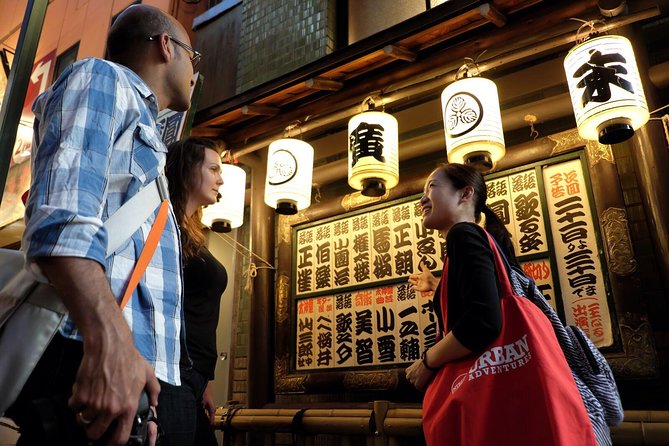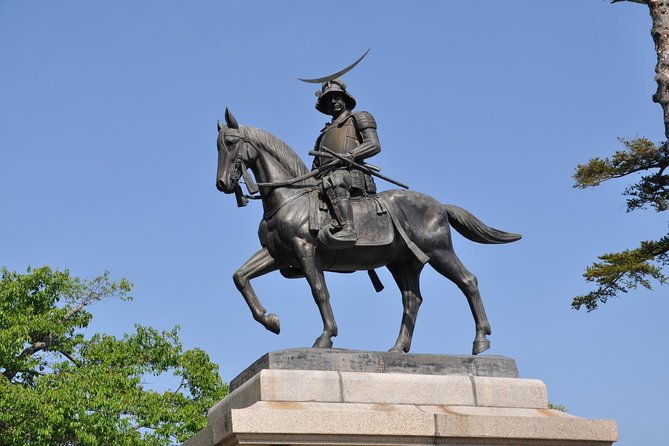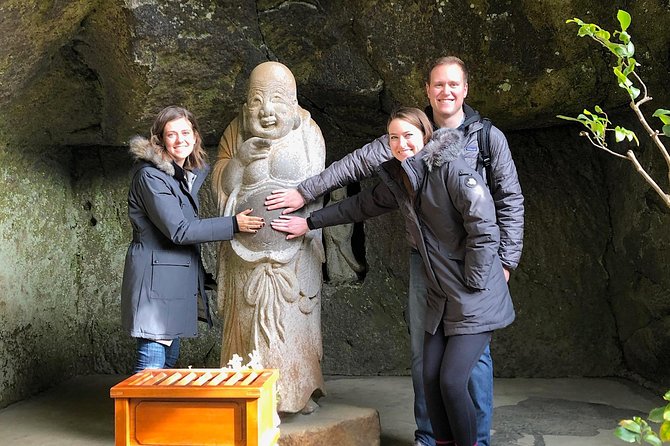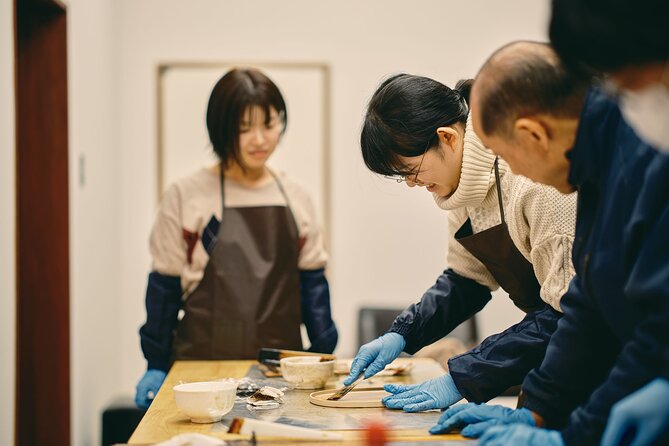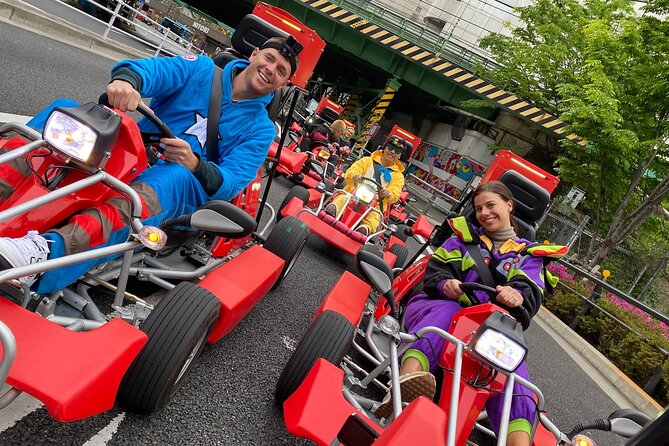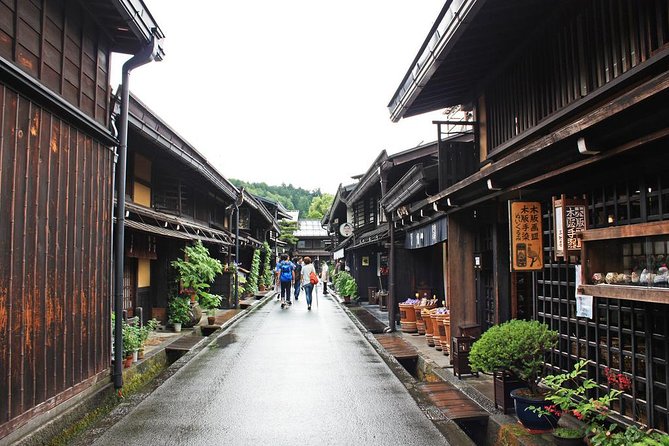In the midst of Tokyo’s bustling streets, a hidden world of ancient traditions awaits. The Shinobi Samurai Culture, once shrouded in mystery, is now within reach through the art of Shodo calligraphy. For 90 minutes, learn about the Musashi Ninja Clan Shinobi-Samurai Honjin Dojo, where expert instructors will guide you in mastering the subtle nuances of brush strokes and unraveling the secrets of this captivating culture. But what lies beyond the strokes of the brush, and how does this ancient art form embody the very essence of the Samurai spirit?
Just The Basics
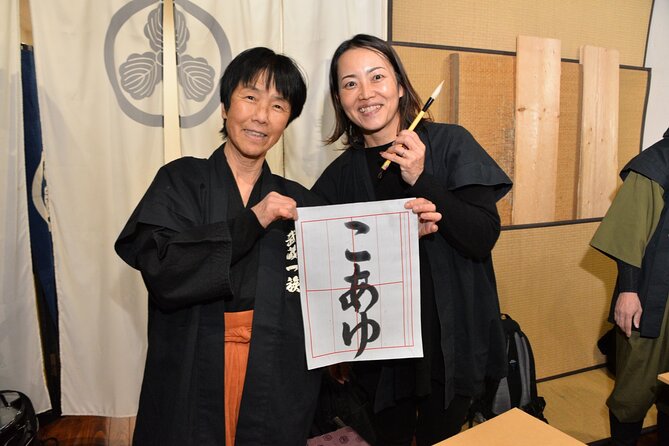
• Experience the ancient art of Shodo calligraphy in a 90-minute session, uncovering the secrets of Shinobi Samurai Culture in Tokyo.
• Learn traditional Japanese calligraphy techniques, including Kaisho, Gyosho, and Sosho styles, in a hidden dojo setting.
• Discover the discipline and focus required to master Shodo, reflecting the Samurai’s commitment to honor and self-control.
• Participants are guided by an expert instructor, delving into the captivating world of Shinobi Samurai Culture and its history.
• Enjoy a unique setting, wearing traditional training wear, and using authentic equipment to create a truly memorable experience.
It's also worth checking out some other tours and experiences nearby.
Unveiling Shinobi Samurai Culture
In the heart of Tokyo, the ancient art of Shinobi Samurai Culture comes alive through the mesmerizing strokes of Shodo, a traditional form of Japanese calligraphy.
This unique 90-minute experience takes participants on a journey through the mysterious world of Shinobi Samurai, a culture steeped in history and tradition.
At the Musashi Ninja Clan Shinobi-Samurai Honjin Dojo, visitors can enjoy the world of these legendary warriors.
With the guidance of an expert instructor, they’ll uncover the secrets of this fascinating culture, learning about its rich heritage and significance in Japanese history.
Get ready to explore the captivating world of Shinobi Samurai Culture and discover its intriguing stories.
The Art of Shodo Calligraphy
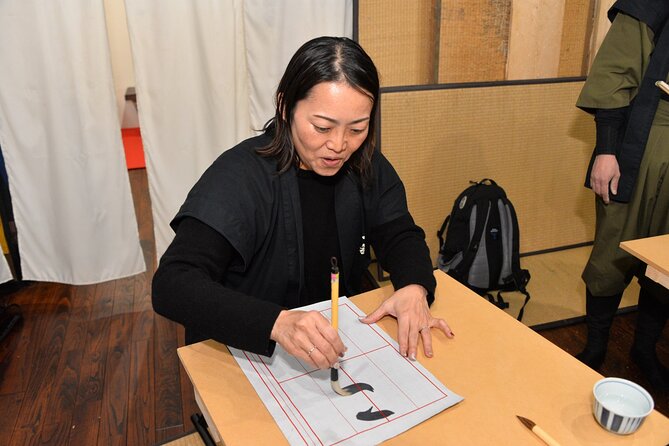
With every brushstroke, Shodo calligraphy embodies the same discipline and focus that defined the Shinobi Samurai, allowing participants to connect with this ancient art form on a deeper level. This traditional Japanese art form is not just about writing, but about the spiritual connection between the brush, ink, and paper. Shodo requires patience, concentration, and harmony, mirroring the Shinobi Samurai’s principles.
| Aspect | Shodo Calligraphy |
|---|---|
| Tools | Brush, ink, paper, and weight |
| Techniques | Kaisho, Gyosho, Sosho styles |
| Philosophy | Harmony, balance, and self-discipline |
Tokyo’s Hidden Dojo Experience
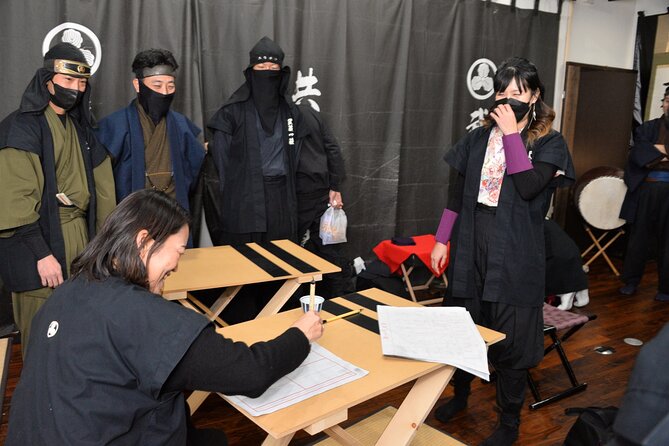
Deep in the heart of Tokyo, a hidden dojo awaits, where visitors can embark on an immersive Shodo experience.
Located in the Musashi Ninja Clan Shinobi-Samurai Honjin Dojo, this unique setting allows participants to explore the world of Japanese calligraphy.
Upon arrival, visitors are greeted by their instructor and provided with traditional training wear to set the tone for the session.
The dojo’s tranquil atmosphere and authentic equipment, including brushes, ink, mats, and paper weights, create an ideal environment for mastering the art of Shodo.
With a maximum of four travelers, this intimate experience ensures personalized attention and a chance to fully take in this ancient Japanese art form.
Mastering the Brush Strokes
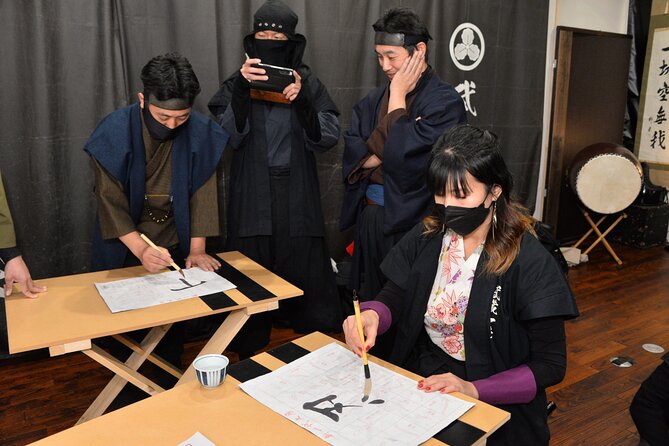
How do the subtle nuances of brush strokes transform a simple character into a work of art?
In Shodo, mastering the brush strokes is an art form in itself. The way the brush glides across the paper, the pressure, and the flow all contribute to the final piece.
A slight variation in stroke direction or pressure can alter the entire mood of the character.
The instructor guides participants in perfecting their brushwork, demonstrating the correct grip, stroke direction, and pace.
As they practice, they begin to understand the intricacies of Shodo and how the brush strokes bring the characters to life.
With each stroke, they’re not just creating a character, but a piece of art that embodies the essence of Shinobi Samurai culture.
A Glimpse Into Samurai History
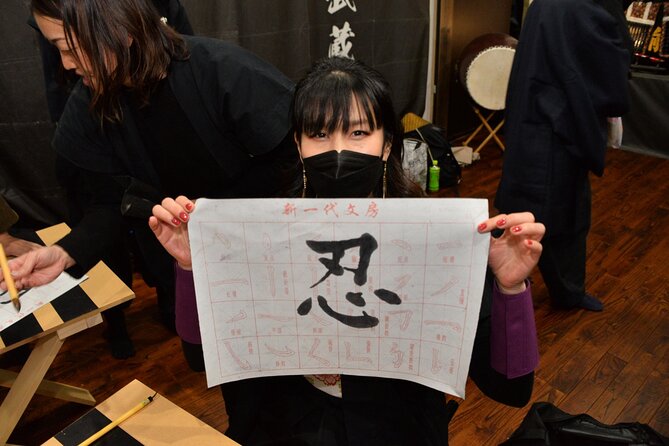
As they master the intricacies of brush strokes, participants gain a deeper appreciation for the rich history and cultural significance of Shodo, which has been an integral part of Samurai tradition for centuries.
The art form originated in China, but it was the Samurai who elevated it to a spiritual level, using it as a means to cultivate discipline, focus, and self-awareness.
In feudal Japan, Shodo was a vital skill for Samurai, serving as a symbol of power, wisdom, and refinement.
Today, as participants explore the world of Shodo, they’re not just learning a new skill – they’re experiencing a piece of Samurai history and culture.
Traditional Techniques Revealed
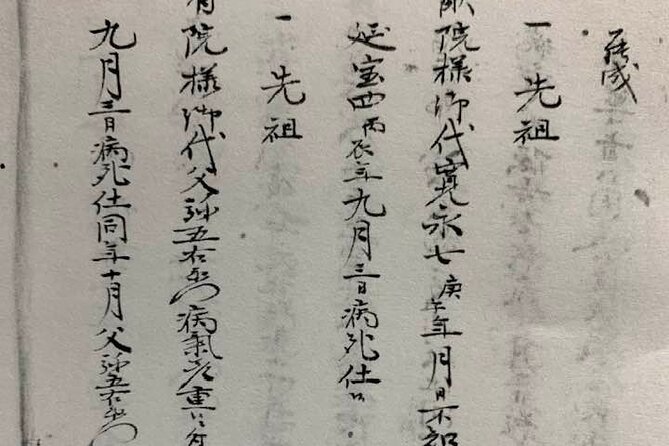
Instructors at the Musashi Ninja Clan Shinobi-Samurai Honjin Dojo guide participants through traditional Shodo techniques, demonstrating precise brush strokes and deliberate movements that evoke the discipline and focus of the Samurai.
With each stroke, participants learn to harness their energy and channel it into the art of calligraphy.
The instructors share ancient secrets, revealing the intricacies of traditional Japanese scripts, such as Kaisho and Gyosho.
As participants practice, they develop their skills, mastering the balance of bold and subtle strokes.
With patience and dedication, they unlock the essence of Shodo, creating harmonious and balanced pieces that reflect the serene beauty of Japanese culture.
Modern Meets Ancient in Tokyo
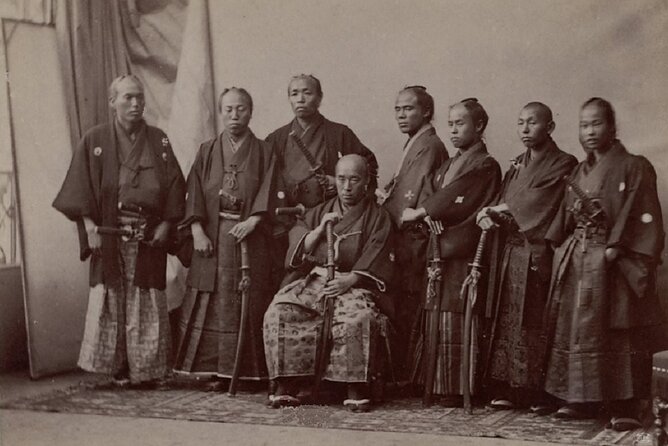
By blending traditional techniques with modern flair, Tokyo’s vibrant streets become the perfect backdrop for a unique Shodo experience. The city’s eclectic mix of old and new provides the ideal setting for this ancient art form to thrive. From neon-lit skyscrapers to ancient temples, Tokyo’s diverse landscape offers endless inspiration for Shodo enthusiasts.
| Traditional | Modern |
|---|---|
| Brush strokes inspired by ancient samurai | Contemporary fonts and styles |
| Handmade washi paper | Digital tools for design |
| Natural ink made from soot | Vibrant, neon-colored inks |
| Classic Japanese calligraphy scripts | Modern, abstract expressions |
In this unique fusion of old and new, Tokyo’s Shodo scene is redefining the boundaries of traditional calligraphy.
Embracing the Samurai Spirit
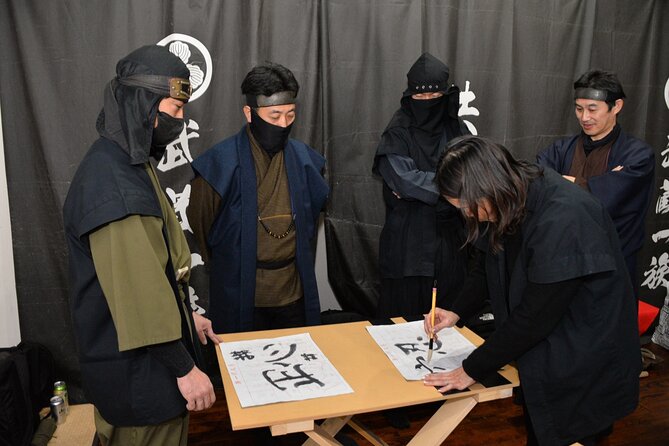
They step into the Musashi Ninja Clan Shinobi-Samurai Honjin Dojo, where the air is alive with the whispers of ancient warriors, and the art of Shodo awaits to unlock the secrets of the samurai spirit.
As they begin their Shodo journey, they’re immersed in the world of discipline, honor, and self-control that defined the samurai way of life. The rhythmic strokes of the brush, the flow of ink on paper, and the balance of composition all come together to evoke the essence of the samurai.
Discipline: Mastering Shodo requires dedication, patience, and persistence, mirroring the samurai’s unwavering commitment to their craft.
Focus: The art of Shodo demands complete attention, much like the samurai’s singular focus on their mission.
Harmony: The balanced composition of Shodo reflects the samurai’s pursuit of harmony between strength and elegance.
Here's a few more nearby tours and experiences we think you'll like.
Frequently Asked Questions
Can I Bring My Own Calligraphy Tools to the Activity?
She wonders if she can bring her own calligraphy tools to the activity. According to the provider, it’s not specified, but it’s best to check with them beforehand to ensure compatibility with their equipment.
Are There Any Discounts for Students or Seniors?
She checks the activity details and finds that there’s no mention of student or senior discounts, so it’s unlikely they’re available, but she recommends asking the instructor or provider directly for any potential special offers.
Is the Dojo Air-Conditioned and Heated?
She checks the dojo’s amenities and finds that it’s equipped with both air conditioning and heating, ensuring a comfortable learning environment for participants, regardless of the season or weather conditions.
Can I Take Photos or Videos During the Activity?
She’s wondering if she can capture memories of the activity. Yes, she can take photos or videos during the Shodo calligraphy experience, but it’s best to ask the instructor first to ensure it doesn’t disrupt the session.
Are There Any Age Restrictions for Participating in the Activity?
She doesn’t see any specific age restrictions mentioned, but since infants must sit on laps, it’s likely suitable for most ages, although very young children might not fully engage with the activity.
Not for you? Here's more of our most recent tour reviews happening neaby
- Lake Ashi Hakone Owakudani Kowakien With Daily Chauffeur
- Lets Lunch / YANAKA MADAME HOME / Local Dish & Rice Ball Making.
- Private Kamakura and Yokohama Sightseeing Day Trip With Guide
- For BUSINESS TRAVELER – Business+Leisure With Jpy⇄Eng INTERPRETER Service
- Tokyo Cyberpunk Street Photo Tour
- One Day Private Tour to Nikko With English Speaking Driver
- Guided Small Group Historical Tour in Asakusa
- Tokyo Authentic Samurai Experience, Bushido at a Antique House.
- Private Akihabara Walking Tour With Otaku and Photography
- Mt. Fuji Private Sightseeing Tour With Local Guide/Photographer
- Tokyo Customized Private Walking Tour With Local Guide
- Full-Day Panoramic Bus Tour in Tokyo With Bay Cruise
- Tokyo City Private Day Tour With Pick Up.
- Challenge Sumo Wrestlers and Enjoy Meal in Tokyo
- Kamakura Tour
Final Words
As you conclude your 90-minute journey, you’ll have uncovered the essence of Shinobi Samurai Culture through Shodo.
With a deeper understanding of the Samurai way of life, you’ll take away more than just a new skill – you’ll embody the discipline, honor, and self-control that defined these ancient warriors.
As you leave the hidden dojo, the modern streets of Tokyo will seem a little more ancient, and you’ll carry the spirit of the Samurai with you.

